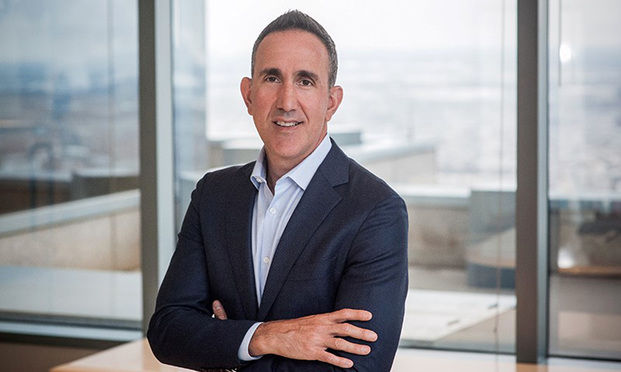Increased Lateral Movement Mirrors Shifts in Legal Landscape
The increase in lateral traffic can be attributed to several environmental and economic factors, and also mirrors the evolution of firms and shifts in the overall legal landscape.
March 11, 2020 at 11:25 AM
5 minute read
 Michael A. Frattone managing partner with Kleinbard.
Michael A. Frattone managing partner with Kleinbard.It's no secret that lateral movement in law firms has increased over the last five years, with more partners willing to move between competing firms. In fact, the National Association for Law Placement (NALP) reported lateral hiring of associates was up by about 22% in 2018. This momentum is expected to continue—a 2019 survey by Citi, cited by the ABA Journal, noted 61% of firm leaders expect to grow their equity partnerships in the next two years through lateral hires and promotions.
The increase in lateral traffic can be attributed to several environmental and economic factors, and also mirrors the evolution of firms and shifts in the overall legal landscape.
Factors to Consider
Long gone are the days of a lawyer spending his entire career with one organization. About 15 to 20 years ago, it wasn't uncommon for attorneys to retire at the same firm at which they began their career out of a sense of loyalty or aversion to risk.
However, with the industry experiencing unprecedented levels of economic growth and law firms reporting steady revenue increases, the reluctance to move jobs has significantly waned, and the millennial workforce is much more inclined to take a risk for potential benefit. This point is exemplified by a 2018 study by staffing agency Robert Half, which found that 64% of surveyed employees reported viewing job hopping as beneficial.
It's also obvious that younger attorneys appear much less loyal to their place of employment than previous generations. However, this shift in perspective is tied to more than just generational values. It speaks directly to the tremendous consolidation the legal industry is experiencing both in Philadelphia and throughout the country.
In 2019 alone, there were 115 law firm mergers and acquisitions throughout the United States according to Altman Weil MergerLine. As more firms announce mergers, we will see an ongoing transition away from the traditional midsize firm model.
As the merger and acquisition trend continues in 2020, it will remain a factor in lateral moves. Rate pressure, growing client conflicts, decreased buy-in from leadership for specific practice areas, changes in strategic direction or even a shift in culture can all be consequences of firm mergers. The reality is, even if an associate was motivated to stay at his current firm for the long run, the firm as they know it could look dramatically different in just a few short years.
Opportunities
Regardless of the reason behind individual lateral movement—whether a change in generational patterns or simply economic influences—the cultural shift also creates opportunities for law firms.
Most notably, firms have a greater opportunity to expand and grow revenue with top-notch legal talent. In an increasingly competitive legal market, firms can work to strategically attract the associates and partners they want through culture, individual practice area investment or other differentiators. Bringing on individual laterals or groups also gives firms the ability to further tap into an expanded network of clients and potential referral sources.
For example, the culture at Kleinbard is a huge draw for younger attorneys, especially millennials, who tend to gravitate toward environments that are more entrepreneurial where they have greater autonomy and direct client involvement. We typically staff matters in a one-to-one/partner-to-associate ratio, which means young lawyers are getting more practical, hands-on experience than they would at a much larger firm. We make it a point to foster this firm culture and take steps to attract laterals with an entrepreneurial spirit to complement our current attorney roster.
In addition, bringing on lateral hires can help breathe new life into the firm (even if you think it doesn't need it). At most firms, the most senior rainmakers are the ones setting the vision for the firm. But having fresh perspectives and wider points of view is beneficial to existing clients and can also help firm leadership think more creatively about running the business.
At Kleinbard, we understand that communicating what the future of the firm looks like is important to lateral hires as well as young attorneys. When we went through our strategic planning process a few years ago, we made sure associates were involved in a meaningful way, and sought their input on governance structure and succession planning. We make a conscious effort to give all attorneys a voice and to listen to it.
The lateral movement trend will continue. In order to be successful in the ever-changing legal market, it's imperative that firms develop strategies to attract top-tier legal talent as it relates to short- and long-term firm goals, while also placing focus on fostering and retaining that talent.
Michael Frattone is a managing partner and partner in the business and finance department at Kleinbard in Philadelphia. He practices in the areas of mergers and acquisitions (representing sellers and buyers), corporate and real estate financings, corporate restructurings, venture capital investments, joint ventures and executive compensation. He can be reached at [email protected].
This content has been archived. It is available through our partners, LexisNexis® and Bloomberg Law.
To view this content, please continue to their sites.
Not a Lexis Subscriber?
Subscribe Now
Not a Bloomberg Law Subscriber?
Subscribe Now
NOT FOR REPRINT
© 2025 ALM Global, LLC, All Rights Reserved. Request academic re-use from www.copyright.com. All other uses, submit a request to [email protected]. For more information visit Asset & Logo Licensing.
You Might Like
View All


Best Practices for Conducting Workplace Investigations: A Legal and HR Perspective
9 minute readTrending Stories
- 1New York-Based Skadden Team Joins White & Case Group in Mexico City for Citigroup Demerger
- 2No Two Wildfires Alike: Lawyers Take Different Legal Strategies in California
- 3Poop-Themed Dog Toy OK as Parody, but Still Tarnished Jack Daniel’s Brand, Court Says
- 4Meet the New President of NY's Association of Trial Court Jurists
- 5Lawyers' Phones Are Ringing: What Should Employers Do If ICE Raids Their Business?
Who Got The Work
J. Brugh Lower of Gibbons has entered an appearance for industrial equipment supplier Devco Corporation in a pending trademark infringement lawsuit. The suit, accusing the defendant of selling knock-off Graco products, was filed Dec. 18 in New Jersey District Court by Rivkin Radler on behalf of Graco Inc. and Graco Minnesota. The case, assigned to U.S. District Judge Zahid N. Quraishi, is 3:24-cv-11294, Graco Inc. et al v. Devco Corporation.
Who Got The Work
Rebecca Maller-Stein and Kent A. Yalowitz of Arnold & Porter Kaye Scholer have entered their appearances for Hanaco Venture Capital and its executives, Lior Prosor and David Frankel, in a pending securities lawsuit. The action, filed on Dec. 24 in New York Southern District Court by Zell, Aron & Co. on behalf of Goldeneye Advisors, accuses the defendants of negligently and fraudulently managing the plaintiff's $1 million investment. The case, assigned to U.S. District Judge Vernon S. Broderick, is 1:24-cv-09918, Goldeneye Advisors, LLC v. Hanaco Venture Capital, Ltd. et al.
Who Got The Work
Attorneys from A&O Shearman has stepped in as defense counsel for Toronto-Dominion Bank and other defendants in a pending securities class action. The suit, filed Dec. 11 in New York Southern District Court by Bleichmar Fonti & Auld, accuses the defendants of concealing the bank's 'pervasive' deficiencies in regards to its compliance with the Bank Secrecy Act and the quality of its anti-money laundering controls. The case, assigned to U.S. District Judge Arun Subramanian, is 1:24-cv-09445, Gonzalez v. The Toronto-Dominion Bank et al.
Who Got The Work
Crown Castle International, a Pennsylvania company providing shared communications infrastructure, has turned to Luke D. Wolf of Gordon Rees Scully Mansukhani to fend off a pending breach-of-contract lawsuit. The court action, filed Nov. 25 in Michigan Eastern District Court by Hooper Hathaway PC on behalf of The Town Residences LLC, accuses Crown Castle of failing to transfer approximately $30,000 in utility payments from T-Mobile in breach of a roof-top lease and assignment agreement. The case, assigned to U.S. District Judge Susan K. Declercq, is 2:24-cv-13131, The Town Residences LLC v. T-Mobile US, Inc. et al.
Who Got The Work
Wilfred P. Coronato and Daniel M. Schwartz of McCarter & English have stepped in as defense counsel to Electrolux Home Products Inc. in a pending product liability lawsuit. The court action, filed Nov. 26 in New York Eastern District Court by Poulos Lopiccolo PC and Nagel Rice LLP on behalf of David Stern, alleges that the defendant's refrigerators’ drawers and shelving repeatedly break and fall apart within months after purchase. The case, assigned to U.S. District Judge Joan M. Azrack, is 2:24-cv-08204, Stern v. Electrolux Home Products, Inc.
Featured Firms
Law Offices of Gary Martin Hays & Associates, P.C.
(470) 294-1674
Law Offices of Mark E. Salomone
(857) 444-6468
Smith & Hassler
(713) 739-1250






